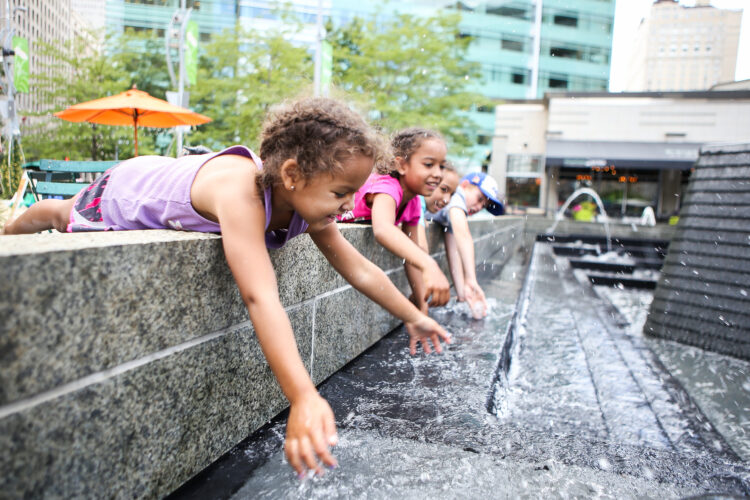
The Role of Fountains in Sustainable Urban Design
In an era where cities are growing rapidly and sustainability is a pressing concern, urban design must balance aesthetics, functionality, and environmental responsibility. Fountains, often considered symbols of beauty and luxury, are increasingly being recognized for their role in sustainable urban design. When thoughtfully integrated, fountains can contribute to the ecological, social, and environmental well-being of cities.
In this blog post, we explore how fountains are transforming modern urban landscapes and contributing to a more sustainable future.
1. Water Recycling and Conservation
One of the key aspects of sustainable urban design is the conservation and efficient use of water. Modern fountain systems are designed to recycle and filter water continuously, minimizing wastage. Unlike older models that used water once and then discarded it, today’s fountains recirculate the same water, reducing the demand for fresh water.
Innovative designs may even incorporate rainwater collection systems, where fountains are replenished using captured rainwater rather than relying on municipal supplies. This approach not only conserves water but also helps manage stormwater runoff, a significant concern in urban areas prone to flooding.
2. Cooling Urban Spaces with Evapotranspiration
Urban heat islands—where cities are significantly warmer than their rural surroundings—are a growing challenge due to concrete, asphalt, and other heat-absorbing materials. Fountains help mitigate this problem by cooling the surrounding air through the process of evapotranspiration. As water evaporates from the surface of the fountain, it cools the surrounding air, creating a more comfortable and livable urban environment.
This passive cooling method can reduce the need for air conditioning in nearby buildings, lowering energy consumption and contributing to a city’s overall sustainability goals.
3. Creating Green, Relaxing Spaces for Well-Being
Sustainability in urban design isn’t just about environmental impact—it’s also about creating spaces that enhance quality of life. Fountains are often placed within parks, plazas, and communal areas to offer a refreshing escape from the bustling city. The sound of flowing water creates a calming atmosphere, fostering relaxation and reducing stress for residents and visitors.
When paired with green spaces, fountains contribute to the ecological health of the city, attracting wildlife such as birds and insects, and enhancing biodiversity in urban environments. These serene areas become vital public spaces that promote mental and physical well-being.
4. Fountains as Art and Cultural Heritage
In addition to their environmental benefits, fountains play a cultural and artistic role in sustainable urban design. They can be used to celebrate a city’s heritage or symbolize its vision for the future. Artistic fountains that double as landmarks not only enhance the cityscape but also promote tourism and community engagement, bringing economic and social sustainability into the urban design conversation.
For example, many cities are integrating fountains with public art installations, using local materials and themes that resonate with the community. These fountains become symbols of pride, encouraging residents to connect with their environment and participate in its preservation.
5. Energy-Efficient Fountain Technologies
A modern approach to sustainability involves using energy-efficient technologies, and fountains are no exception. New fountain systems are designed to minimize energy consumption, utilizing solar-powered pumps, LED lighting, and energy-efficient motors. By adopting renewable energy sources, these systems can significantly reduce the carbon footprint of fountains in public spaces.
Additionally, programmable systems allow for smart management of water and energy, enabling fountains to operate at reduced capacity during off-peak hours or automatically adjust water flow and lighting based on environmental conditions. This not only conserves resources but also aligns with the broader goals of creating eco-friendly urban environments.
6. Stormwater Management and Urban Resilience
Fountains can also play an important role in urban stormwater management. As part of a city’s green infrastructure, they can be designed to collect, store, and slowly release stormwater, reducing the risk of flooding during heavy rainfall. This helps urban areas become more resilient to extreme weather events, a crucial aspect of sustainable urban design in the face of climate change.
By integrating fountains with permeable surfaces and rain gardens, cities can improve water infiltration, reduce pressure on drainage systems, and enhance groundwater recharge. These innovative designs contribute to a city’s overall resilience and long-term sustainability.
Conclusion
Fountains are more than just decorative features—they are powerful tools in sustainable urban design. From water conservation and energy efficiency to urban cooling and cultural enrichment, they play a multifaceted role in creating greener, more livable cities. By thoughtfully integrating fountains into urban landscapes, designers can enhance both environmental sustainability and the quality of life for city residents.
At Local Fountain Expert, we are committed to developing sustainable fountain solutions that not only beautify urban spaces but also contribute to the ecological balance of cities. Contact us today to learn how we can help bring innovative, eco-friendly water features to your next urban project.



